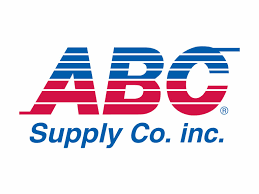Call us: 305.256.4550
Who Are We?
About Us
FLORIDA TEC is a Florida State approved Testing Laboratory Firm
As such we are ready to provide the Construction industry with fast, reliable and professional service. We can help you from the bottom up! Corrugated metal welding inspections inspection of new lightweight insulated concrete pours, roof testing necessary for permits, engineering and consulting Different from other testing laboratories, we are prepared and able to assist you with any roof engineering and/or roof design problems, Our company is supported by the dedication and professional expertise in the construction industry of its staff. Our team consists of individuals with state certified licenses as home inspectors, & general contractors, and professional engineers, A team of highly trained and experienced inspectors is ready to assist you with your next project. Give us a chance to prove what we claim!
Furthermore, Mr. Angel A. Alvarez is currently serving as a Customer Liaison He has vast experience in the inspection and consulting field. Mr. Alvarez has been associated with the construction industry for decades. He was also a member of a court apported committee which was responsible for revising Chapter 34 of the SFBC. Such committee was responsible for making serious and important improvements to this chapter and Protocols. Many of those code changes are still in force in the FBC today. Furthermore, as the Chief Roofing inspector he was personally involved in the training orientation and discipline of subordinate inspectors. He also had a significant role on seminars designed to help engineers and architects stay up to speed with Code changes. He published two Roofing Manuals with this in mind and helped develop an inspection Common Code, which served as the basis for other subsequent inspectors’ comment lists. Mr. Alvarez feels that by interacting with the private sector as a whole, he may put to good use his knowledge, experience and energy. He welcomes new challenges and is ready and willing to take on any task or projects, He also re-designed the original complicated and cumbersome roofing permit application and turned it into a simpler two-page document. Mr. Alvarez has been known among his peers to be practical helpful and always available to find solutions to problems.
No industry has experienced so many changes in such a short period of time than the roofing industry! New bulling technology, innovative construction methods and building code changes, have been overwhelming to many contractors. On top of that required testing has made it even more challenging in response to those circumstances, we have put together a team of professionals ready to assist you in handling and understanding many of these new requirements. Our goal at Florida TEC is to provide you with reliable, dependable and professional services in the areas of roof testing We certainly hope we can be of immediate assistance to you!

What is a Moisture Survery?
The Testing Application Standard, TAS-126 Moisture test procedure is designed to determine the moisture trapped within a roof assembly. These roof moisture tests can help identify the percent of moisture located throughout the roof. Per the Florida Building Code: A roof deck that is found to have more than 25% of ‘high’ moisture content, cannot be repaired, it should be replaced.
The analysis initially begins as a non-destructive test using impedance or infrared technologies. However, to get a more accurate measurement of what the relative readings mean, it is then necessary to take core samples of the different readings and process them per section 1521.12 of the Florida Building Code. A Moisture Survey can be performed anytime as long as the roof’s surface is dry. If there are puddles of water, they should
- Determine the percentage of ‘high’ moisture areas present in your roof system and if the roof can be repaired or if it must be replaced.
- Know what areas are ‘wet’ and ‘need’ to be replaced.
- Determine if your roof is dry enough to accept a restoration coating.
- Determine if a second roof can be installed over the existing roof system
The Testing Application Standard, TAS-106 procedure has been set in place to identify if a particular roof tile’s installation can withstand a minimum 35lbs of wind uplift resistance. The test can be adapted to test both, bonded and mechanically attached applications. The number of tests performed is determined by the size of the roof. On a new roof tile installation, the tile uplift test is required by the building inspector before they approve the final inspection. Additionally, the number of tests can be increased to help determine the percentage of roof tiles, which no longer meet the minimum wind uplift resistance after a major storm or wind event. Such a test can help substantiate an insurance claim in some cases.
The Testing Application Standard, TAS-124-95 procedure provides a method for determining the uplift resistance of an adhered or mechanically attached roof system assembly to the roof deck. Both the bonded test and the bell chamber test are intended to confirm that a given installation meets the design pressure requirements under ASCE 7-98, as required in section 1606 of the Florida Building Code. The bonded pull test is a destructive test where a 2’x2’ plate is adhered to the roofing system, a cut is made all the way around it, and static uplift pressure is then applied to it. This will require a roofing contractor to patch the area. A bell chamber test consists of a 5’ x5’ apparatus that is placed on the roof system assembly. If the roof system holds the required pressures, then no cuts into the system are necessary, allowing the option of having the potential of being non-destructive. If the system fails, the building owner or contractor, will likely want to open up the area and determine the mode of failure.
The Testing Application Standard TAS-105, is known throughout the industry as a fastener pull test or as a fastener withdrawal resistance test. This procedure has been set in place to determine if a particular mechanical fastener, when used to attach a roofing component to the roof deck, provides sufficient resistance to static uplift force to meet the wind load requirements of an approved roof assembly, for a specific building. Based on the results of the fastener pull test, the contractor can determine what fastener(s) can be used for the roof system assembly. Additionally, calculations can also be done to determine the fastener spacing requirement.




Are you looking for the best roof testing service? See what surveys and tests we offer below!
Check out our Surveys and Tests!
Or call us today at 305.256.4550

